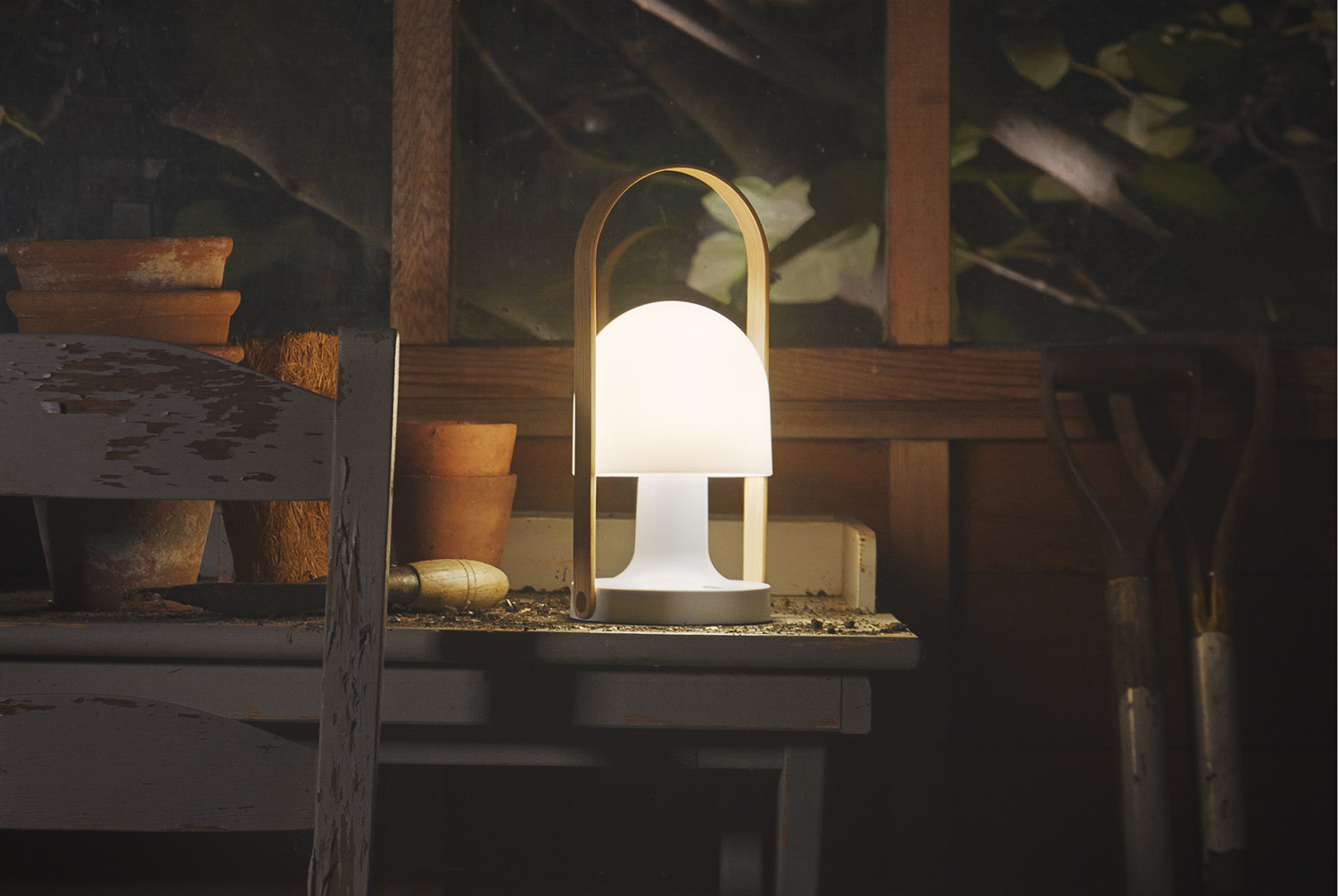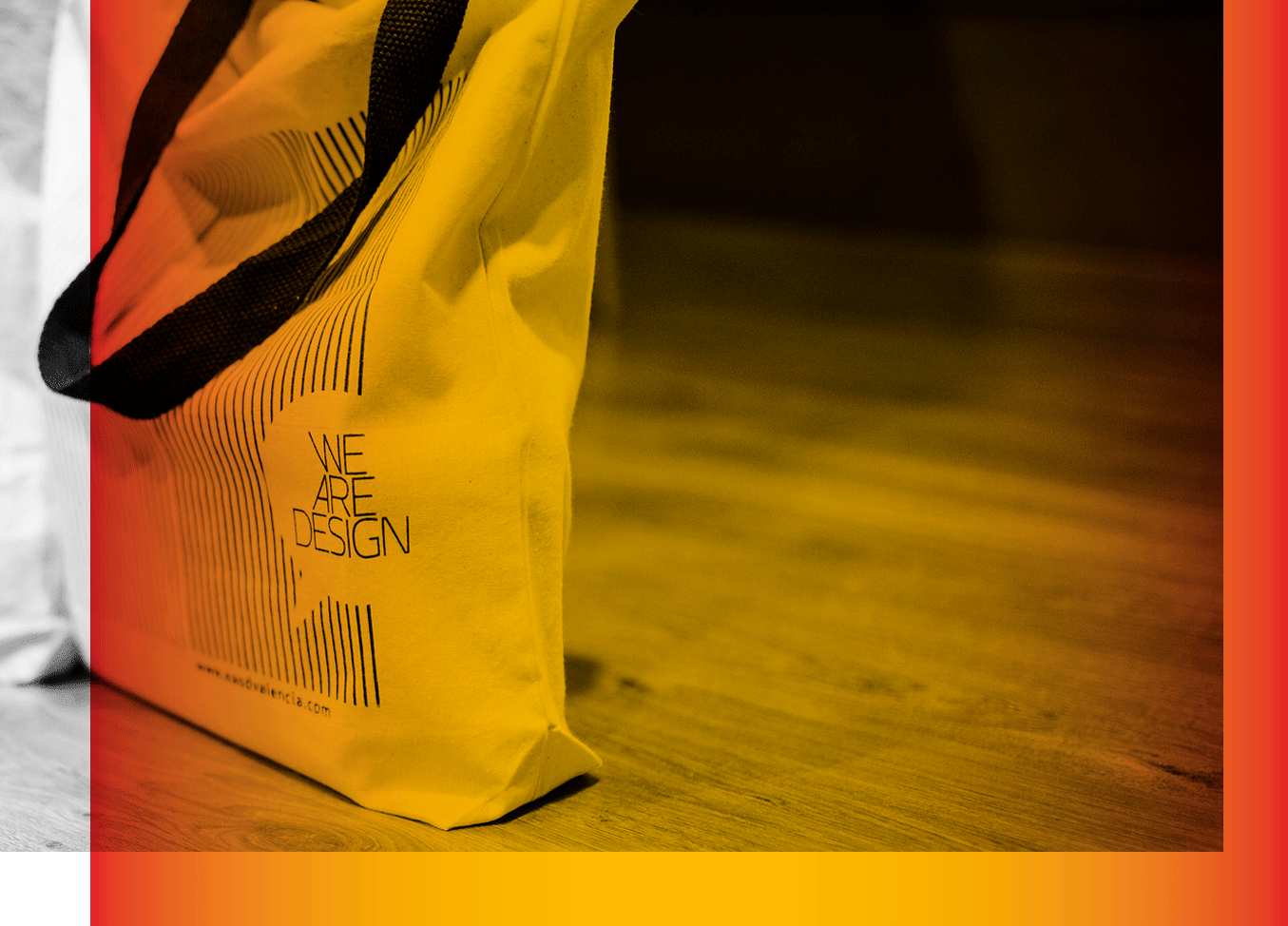This monthly section on the exhibition From Spain With Design: Identity and Territory would not be complete without Inma Bermúdez’s FollowMe lamp. We are talking to the brand-new winner of the National Design Award 2022.

You are part of FSWD: Identity and Territory with the lamp you created for Marset FollowMe, which, in your own words, was a turning point, why, what did it mean in your professional career?
With the FollowMe we didn’t just design a lamp, we launched a new product category: stand- alone lamps. We introduced it to the market in 2014, a few years ago now, and although it is now quite common to have rechargeable stand-alone lamps, it wasn’t at that time. We took it to Frankfurt to Light+Building, the lighting trade fair par excellence that takes place every two years, and we were the first. In fact, I remember walking down the aisles of the fair with the illuminated lamp hanging from my arm and people were amazed because it was so unusual. If it’s already difficult to make a good design, creating a new typology is even more complicated. In that sense, I think we broke new ground. Technology allowed us to make that breakthrough, and being the first always gives you that prestige; in fact, for Marset it meant growing and making the brand even better known. The bar has been set so high that I don’t know if we’ll ever surpass it, but I’m delighted with everything that’s happened with the lamp.
What is the FollowMe story and its intention in the environment of luminaires and everyday objects?
The first thing to clarify is that the FollowMe comes from a Marset design from the 1970s called Flass. It was a lamp that had a tubular handle that held the lampshade exactly as the FollowMe does. And that was my starting point. I said to Marset ‘I’m going to redesign your Flass’.

Then, as the idea developed, it was when Marset told us that LED technology was evolving and we were at a point where we could incorporate it into this model, and if we incorporated the LEDs we could also incorporate the batteries and make the lamp cordless. The story of what design is starts there.
The story of function, of what the object means and how it communicates, it was clear to me that the handle had to be made of wood because it is the point where you come into contact with the lamp, where you pick it up. The rest of the components we thought of in other materials such as aluminium and glass, but in order to produce it at a price that was really accessible we had to make it in plastic. To make this material more attractive we added details such as brass and wood to achieve a balance between materials.
“I have a lot of anecdotes of people who come up to me and tell me their story with the lamp, which doesn’t happen with any other product”.
The name was also very decisive for the product. It was born one night when some friends came to visit us at home and we came up with ‘follow the light’, ‘follow me’, and it was a very good point.
I have a lot of anecdotes of people who come up to me and tell me their story with the lamp, which doesn’t happen with any other product. They show you photos and tell you about it with a lot of passion and affection, and that’s so nice! Because you design the product, you make it and you never expect that people are going to enjoy it and experience it so much, and that’s the icing on the cake of the project: knowing that it’s a product that people appreciate, that they care for and that they have an emotional relationship with it. It’s the best thing that can happen.
If you were to design it again now, would you do it exactly the same or would you change something?
I wouldn’t change anything; I would make it as it was designed. It’s beautiful, it’s balanced… And then there’s one very important thing and that is that there are hardly any complaints. And that’s an achievement: knowing that you’re making something that lasts and that if there’s a problem, you have a replacement.
In addition to what you mentioned earlier about the choice of materials, what other production challenges were involved?
The wood was also a challenge because it was the most difficult part to control, the part that made the product more expensive… but I was clear that I wanted the handle to be made of wood. There were other things I did give in on because I understood the reasons, but the handle was an interesting debate with the producer because obviously the price went up quite a lot, but if I had made the handle in plastic, it would not be the FollowMe, it would be a different lamp. I think there are times when we have to take risks. In design there is a very intense conversation between the supplier/manufacturer and the designer.
“Designers are capable of providing solutions for other types of problems, because our way of thinking is just as creative for creating a product as it is for providing a solution to a problem”.
What would you like to design now? What is your next challenge?
I’d like to do other kinds of projects, where the end result might not be a product. I think designers are capable of providing solutions for other types of problems, because our way of thinking is just as creative for creating a product as it is for providing a solution to problem “x”. I believe we are highly capable of doing other things and I think that humanity is going to need very creative solutions to face environmental problems, and problems that we as a society are going to have… I don’t know how, but I would like to go into that garden.


FSWD: Identity and Territory brings together more than a hundred very different pieces by Spanish designers. What do you think of this READ initiative and its itinerant tours around the country?
Anything that promotes Spanish design is fine with me, of course. We don’t have to explain to designers what design is, but to business people, to the Administration, to politicians, to the general public. They have to see and understand the importance of design and that we are all surrounded by products and services that have been designed and how important design is for society. What design does is to make things work, to make everyday life easier, the environment, services… everything.
From Spain with Design is also a tool for the projection of Spanish design. What state are we in and what needs further training?
I think we have to believe in it a little more, believe that we do it very well. I think that Spanish design and Spanish companies have a very good level, an example is the number of foreign designers who come to work with Spanish companies and they do it because they see business, because they consider the companies to be powerful, otherwise they wouldn’t collaborate with them.
It is true that there is always room for improvement. I would like for, not only Spanish design but design in general, to focus on doing less and better. Doing things that make sense, that are better thought out and matured.



